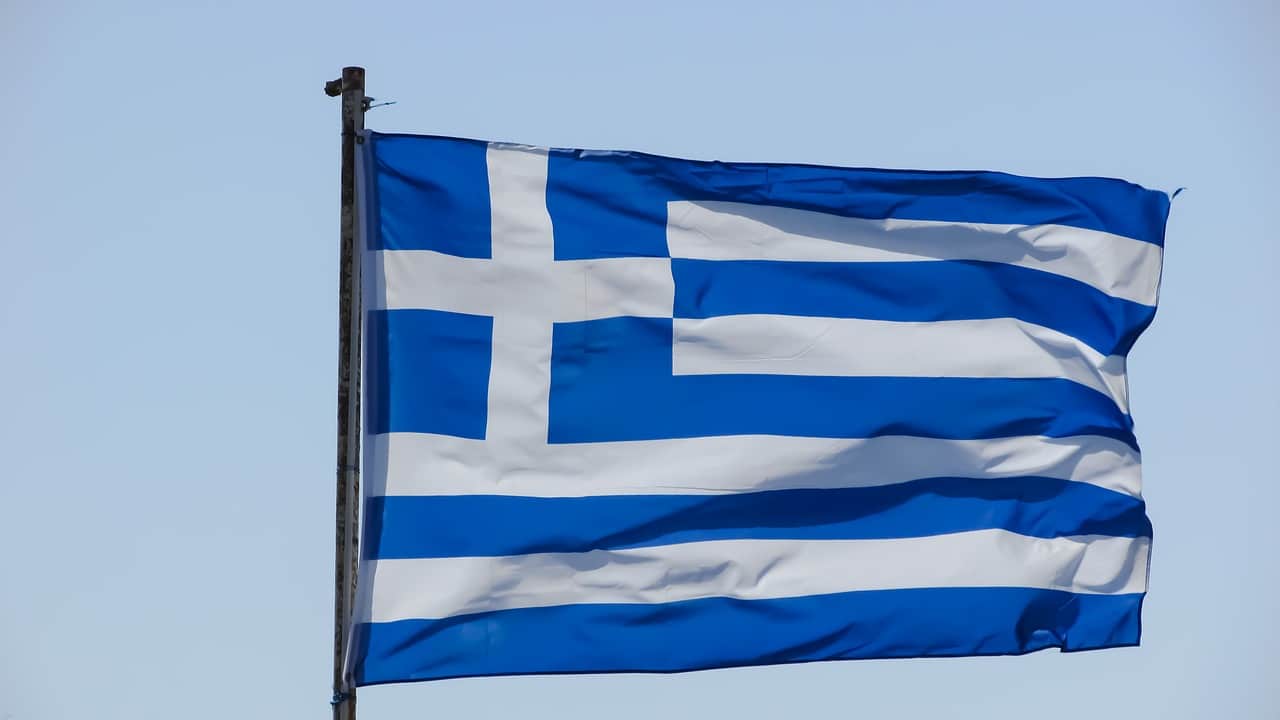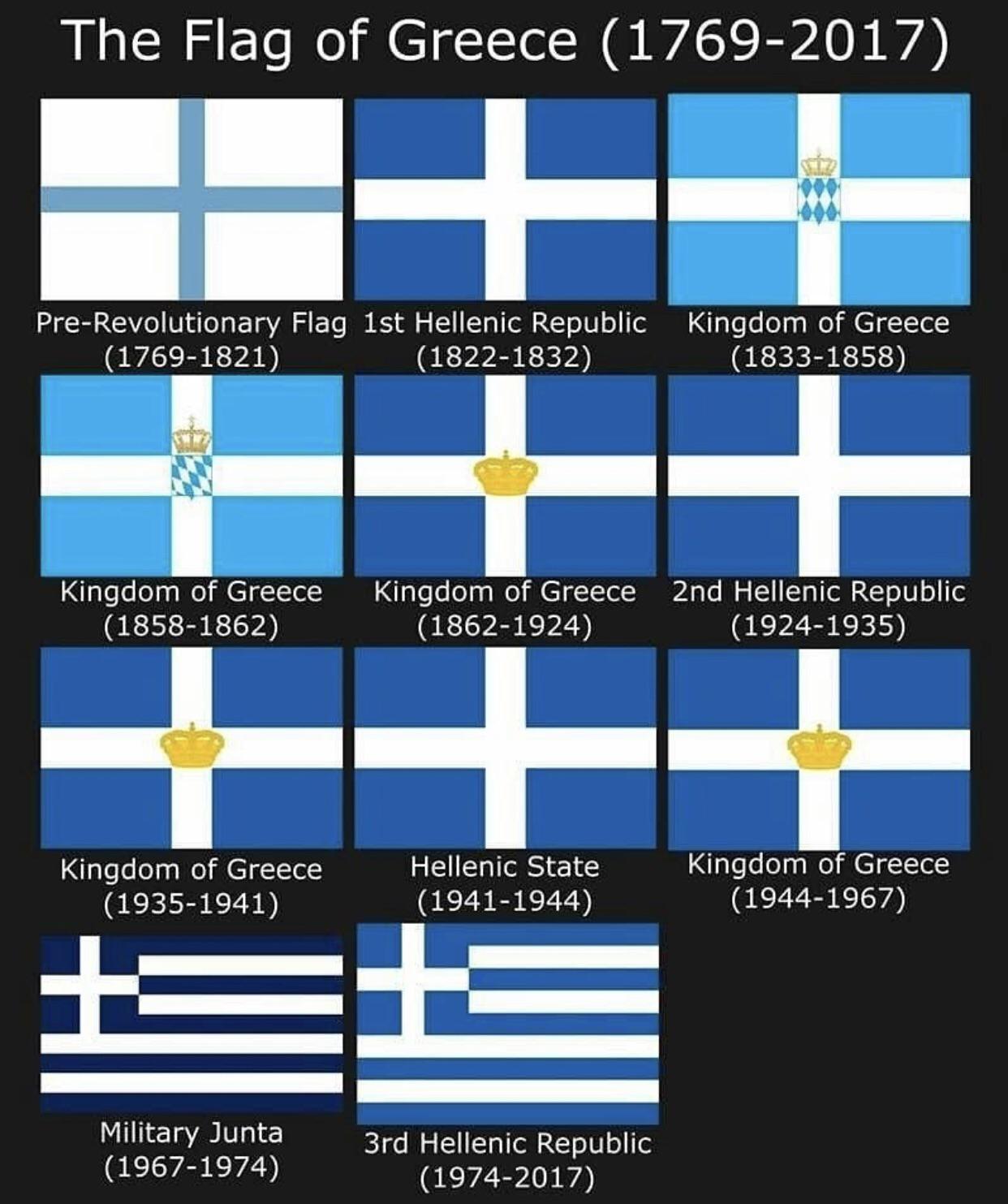
Five blue horizontal bands, four white and a white cross on a blue background in the upper left corner. The Flag of Greece It is the national symbol of the modern Greek state and since 1978 the only official flag of the country.
Blue and white have been colors widely used by the Greeks throughout their history. Although there is no historical certainty, some Greek patriots defend that these colors were the ones that decorated the weapons of the same Achilleswhile others date back to the heyday of the Byzantine Empire, whose ships and squads wore white and blue on many occasions.
Yes it is shown that these were the colors of the revolts against the Ottomans at the end of the 1821th century. In addition, the armies that fought for the independence of the country, between 1822 and XNUMX, adopted the white cross on blue field for your banners. Even during the Second World War, the organized resistance against the Italian and German invaders painted the facades of buildings with these colors to vindicate their fight.
History of the flag of Greece
But the flag of Greece born at the same time as the modern Greek state. It must be remembered here that, since classical times, the Greek people had never enjoyed political and territorial unity except for the periods in which they were under the rule of some foreign power (Macedonia, Rome, Byzantium, the Ottoman Empire).
The independence of Greece was proclaimed on March 25, 1821, although it was fully recognized some years later. In January of the following year the First General Assembly of Greece held in the historic town of Epidaurus. In it, among other matters, the national symbols were established. Until then, the different armies and organizations that had fought against the Turks for independence had their own flag. It was necessary to choose one accepted by all.

Different designs of the flag of Greece from 1921 to the present day.
After many discussions, finally the provisional government decreed on March 15, 1822 the exact pattern of the greek flag: white cross on blue for the terrestrial flag. For military vessels, the design was established with nine stripes of alternating colors with the white cross on a blue field in one corner (that is, the current design), which in the XNUMXth century would eventually replace the first original flag.
El kingdom of Greece It displayed various symbols on its flag referring to the monarchy or the reigning dynasty, which disappeared during the republican periods of the country's history (such as the current one, for example).
As a curiosity, it should be noted that, during the years of dictatorship of the Military Junta (1967-1974), the size of the Greek flag was modified. Thus, the traditional blue color was replaced by a darker blue.
Meaning of colors and symbols
If you ask an ordinary Greek citizen for the meaning of the colors of his flag, he will answer without hesitation. Almost all the inhabitants of the country are convinced that these symbolize the blue of the sea and the white of the waves. This is a very widespread belief in the Hellenic country, although it has no real basis. The truth is that the flag of Greece is popularly known as Γαλανόλευκη, that is to say "blue and white", without detailing the meaning of each of the colors.

The blue and white colors of the flag are present in many of the Greek landscapes
As for the white-on-blue cross in the corner, its meaning seems out of the question. This represents the Greek Orthodox Church, which is the majority religion in the country.
Another very widespread popular tradition is that of meaning of the nine stripes, which would represent the nine syllables of the phrase Ελευθερία ή Θάνατος ("Freedom or death"): the five blue stripes for the syllables of the word Ελευθερία ("freedom") and the four white stripes for the phrase ή Θάνατος ("or death »).
Instead, lovers of the classical world will prefer another theory that holds that these nine stripes symbolize the nine Muses from ancient Greek mythology.
Also noteworthy is the official use of the flag of Greece as regulated by the law of this country. For example: in all official buildings, including schools, ships and Greek embassies abroad, the Greek national ensign must be hoisted at 8 am and lowered before sunset. On the other hand, it is strictly forbidden to use it as a background for any type of inscription or image, nor as a corporate emblem or for commercial purposes.
Interestingly, the law also specifies that the national flag cannot be hung from a window or balcony. This differs a lot from what is done in other countries such as Spain. In Greece, on the other hand, the flag must always be flown on a pole.